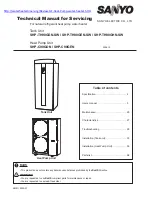
Positioning the Softener.
Where possible the softener should be placed close to the rising main. Take
care to allow hard water take off points for a drinking water facility and /or an
outside tap. The distance between the drain and the Softener should be as short
as possible. Ensure that both the drain and overflow will not freeze or reach a
temperature above 40°C. If putting the Softener within a cupboard ensure that
the base is adequately supported. If the Softener is being installed within your
loft etc it is recommended to house the Softener within a tank capable of storing
at least 100 Litres with an overflow fitted. The overflow on the tank should be
below the Softener overflow and be a minimum of ¾” in size.
A single Check Valve.
A suitable check valve should be fitted. This will usually be in the
installation kit that can be ordered separately.
Check List.
Before you start the installation make sure that
you have all the necessary fittings. The
purchase of one of our standard installation kits
will normally ensure that you have everything
that you need for a typical installation
Water Pressure Test.
It is important that a pressure test is carried out.
High and low water pressure can result in either
damage to or failure of the Softener. Although
the Softener is tested to a pressure of 8 bar
(120psi), we recommend the fitting of a pressure
limiter should your pressure exceed 5 bar (70
psi). The minimum working pressure is 1.4 bar (20 psi)
Before starting the installation of the valves ensure that the stop cock is in
the closed position.































